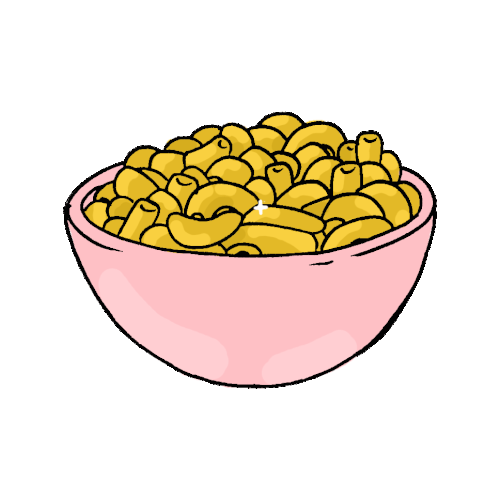This Macaroni Is Mm Mmm Good!

Rationale: This lesson will help children identify /m/, the phoneme represented by M. Students will learn to recognize /m/ in spoken words by learning a sound analogy (saying “mmm” when they eat something good) and the letter symbol M, practice finding /m/ in words, and apply phoneme awareness with /m/ in phonetic cue reading by distinguishing rhyming words from beginning letters.
Materials: Primary paper and pencil, chart with “macaroni makes me say “mm mm mmm”, drawing paper and crayons, Dr. Suess’s ABC book, word cards with MAN, MAP, MEAT, MAT, PORK, and MILK; assessment worksheet identifying pictures with /m/.
Procedures:
1. “Today we are going to be learning the letter M! You probably use it all the time without even noticing it! M is different from every letter because it takes a certain shape and sound to make /m/. You might make the /m/ sound when you eat something yummy and today we are going to learn all about it!”
2. “Let’s pretend we just ate something really yummy! Rub your tummy and say /m/ /m/ /m/. The sound you make when you say /m/ is the same sound you make when you humm! Our lips are closed and vibrate!”
3. “Let’s try to find /m/ in the word lemon! I am going to read the word super slow and break up each sound. Help me find /m/! Ll-ee-mmm-oo-nn. Did you hear the mmm sound? I felt the vibration in my mouth and my lips were together when I said mmm. /M/ is right in the middle of the word lemon!”
4. “Tongue ticklers can help us remember sounds! This tongue tickler is going to help us remember /m/ (say “mmm” while rubbing belly). Everyone loves macaroni and cheese right? It was one of the yummy things that makes us say /m/. Michelle loves macaroni and it always makes her say mmm mmm mmm. So our tongue tickler is: Macaroni makes Michelle say mm mm mmm! Let’s say it three times together. Now, just like I did with lemon, let’s drag out the /m/. Like this: Mmmacaroni mmmakes Mmmichelle say mmm mmm mmm! Now we are going to break the /m/ sound away from the word. Like this: M-acaroni m-akes M-ichelle say mm- mm- mm-.”
5. Provide students with primary paper and pencil to write M. “Now we are going to write the letter that makes the /m/ sound. The letter is M! You are going to start at the fence and draw a straight line all the way down to the sidewalk. Next, you will go to the top of the line and make a curve going back down to the sidewalk, like this (show them). Then, you are going to do that same thing again, like this (show them)! Everyone show me and your neighbor the M you just wrote! Once you have shown us your M, write nine more of them the same way!”
6. Show the word man and help them learn how to decide if it is “man” or “ran”. “This looks like the letter M that we just learned how to write! So we know it makes us say “mm mm mmm” (while rubbing belly). So this word is mmm-an. Man! Let’s try some more without my help!” Hold up card that says “map”. MAP: map or tap? MEAT: heat or meat? MAT: mat or fat? PORK: pork or fork? MILK: milk or silk?
7. Call on students and tell how they knew: “Do you hear /m/ in mango or banana? Sun or moon? Lake or make? Now let’s see if you remember our action for /m/. If you hear /m/ in the word, rub your belly! Miss Maddox made an amazing meringue pie!” Determine whether or not the students know when to pay their belly. If they do not, try another, such as “Mason makes milkshakes in May!”
8. “Now we are going to read an alphabet book! This book is ABC by Dr. Suess! This book is about a silly animal that has four feathers growing out of its head!” Read the page about the letter M and ask the children if they can come up with a silly /m/ animal! Such as magical, magnificent, moose! Then have each of them draw a picture of the animal they come up with.
9. “Let’s do a drawing activity now! Can you think of any other words that have /m/. There are lots of foods with /m/, like meatballs, milkshakes, and m&m’s! Think of a food, candy, or drink that starts with M and draw a picture of it! Once you have finished your drawing, bring it to me so we can put it on the wall!”
10. Give the students the assessment worksheet and call students up to have them do step #7 individually.
References
“Mmmm! That’s good!” by Emme Levins https://sites.google.com/view/ctrdlessondesigns/emergent-literacy-design?authuser=1
Assessment Worksheet
Book
Seuss. (1963). Dr Suess' Abc. London.